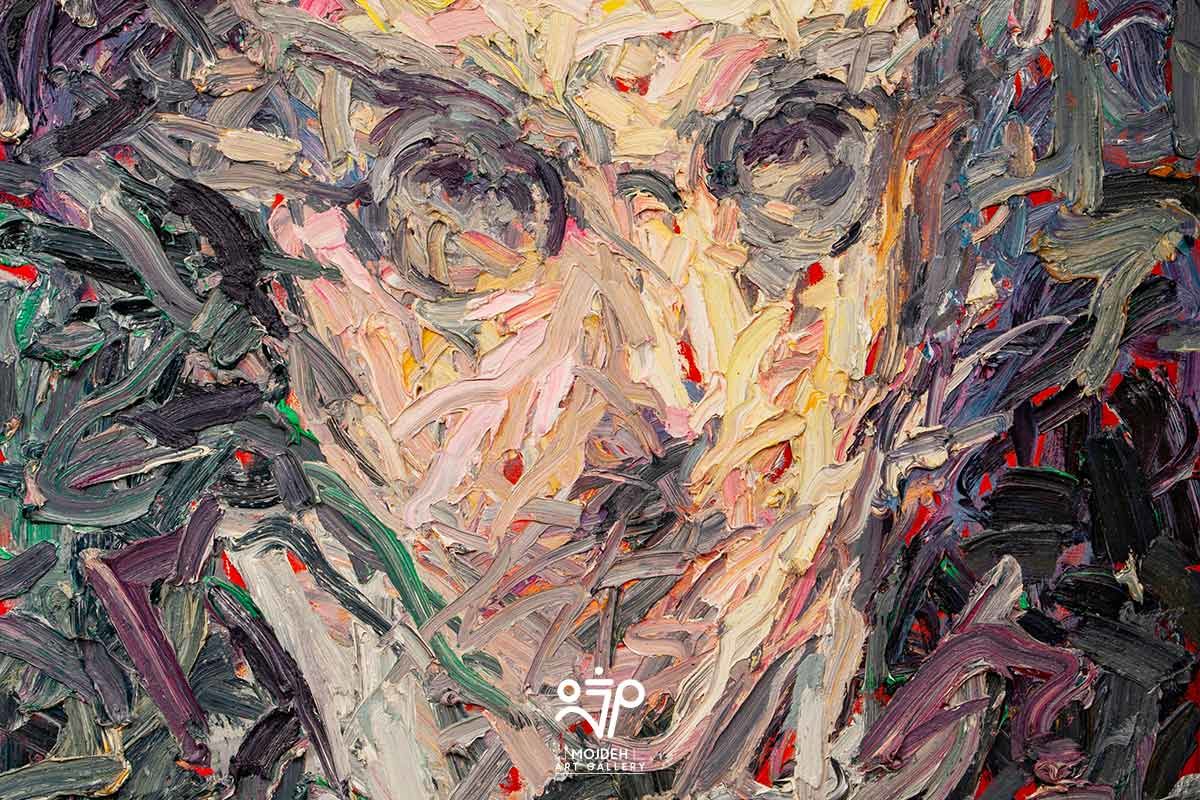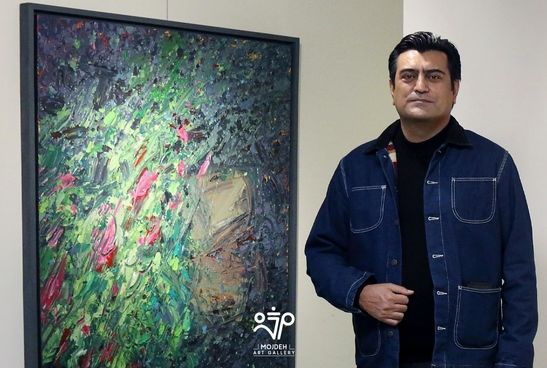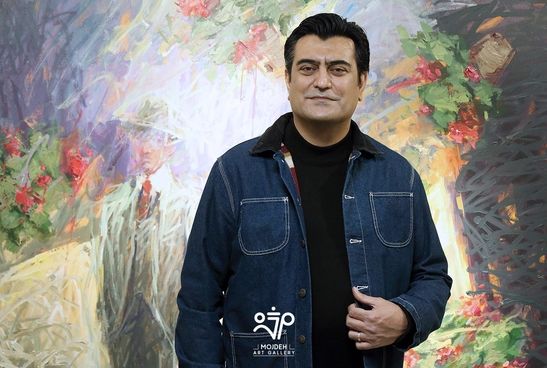"We’ll Meet at the Resurrection" Collection

In the painting, through the complex system of lines, colors, looks and gestures, special ways of enunciations are created, which place the footprint of the painter artist in the work. Every work of art is an expression whose presupposition is the enunciation, and in fact it is an action that causes the creation of previous and subsequent actions, and it can be analyzed through created narrative or visual forms. Apart from this issue, the painting produces meaning through two languages: one is based on signs that try to create images, these images are the material and form of visual expression, and on the other hand, it carries different meanings through the formed Plastic or Visual language. Visual signs are signs that give form and shape to the work and produce meaning: colors, lines, graphical shapes and context’s texture. The texture used in the canvas is related to the sense of touch and can be considered as a valuable visual material. Finally, the material of expression and the two Pictorial and Visual languages match each other so that the process of meaning making takes place.
In the "We’ll Meet at the Resurrection" collection, the face is the main factor and one of the clear and main factors in the meaning production. This face, which seems to refer to the natural world in the first place (Sadegh Hedayat's portrait), is changed in Asanloo's art through multiple depictions, visualization and feeling. The material of expression that takes different forms through the image is color, which is sometimes drawn on the canvas with a brush, sometimes with a spatula, and sometimes with finger, is dependent on the artist's feeling. The created pictorial space is related to the specific enunciation of the artist and is not a precise reference to the outside, but has its own referential world in the imagination and psyche of the enunciator who tries to distance himself from the image of Sadegh Hedayat in the real world. The image of the face in these works, i.e., a “him” is created, which is not only the artist in a state of separation from me, but also tries to be in a state of separation from the main face.

In this collection, the subject of the enunciator is both the subject of the action that created the face and the subject of the observer who has watched the face of "Hedayat" according to his imagination. In fact, the artist shows off his visual skills on the canvas, he first observes the subject in his mind, then he recognizes it as an object or "face" to others, and it seems that he is trying to balance his knowledge of "Sadegh Hedayat" and aesthetics in the creation of the artwork and enters the dual pleasure of creating and visual logic. Through the plurality of the enunciator’s subject, as both an observer and an actor, the object, i.e., the portrait and the face, becomes plural and finds different manifestations that are related to one of the states of the subject. Introducing and showing these different appearances and representing the face from different angles and in different states is one of the main strategies of the artist and has its own aesthetic effects as if in the passage of time, not linear time, but "internal space-time" the artist narrates: "Sadegh Hedayat" according to Asanloo's narration and from his point of view.
In this collection, the images are apparently fixed, but they do not represent only one action, but they depict different facial expressions in motion, which are related to different moments and express the feelings of both the enunciator and the subject of the enunciation, i.e. Sadegh Hedayat.
Another strategy of Asanloo is to hide the face. He combines two languages in the form of two different layers, but in some works, instead of increasing the "visible" layer, he tries to hide it, and sometimes he slightly reduces the distance between the plastic or visual layer and the pictorial layer that allows the image to be faded and unrecognizable in color, and the enunciator’s feeling is expressed through texture and color. In other words, he hides the face in color and removes the edges. Lines do not stabilize the face, but on the contrary show its instability and detachment. Sometimes we face another type of face, which is the ghostlike, and black and gray color gives it an appearance.
This camouflage and hiding of the face by color encourages the viewer to discover the meaning. By replacing the two actions of "hiding" and "revealing", the viewer enters the game between "being" and "appearing", is it a face or is it not a face and it seems to be a face. It is in this game that meaning emerges. It should be noted that the images that use the expressive material of color, which gives weight to the face and appears in different ways, creates the semantic square of "obvious" and "hidden", the enunciator tries to force the viewer to see an image by using the visual language, the representation of the face is sometimes expressionist and sometimes cubist, even leads him to conceptual and abstract painting. In fact, without moving the viewer and the observer in a specific linear direction, he tries to introduce him to different faces that had a reference and example in the real world at the beginning, but it is as if he intends to erase that example from the viewer's memory and mind every time and replace it with another image and another face, and it is this new face and new object that creates meaning. Every time the viewer is faced with a new face with special codes. It must be said that the face becomes an object that depends on the artist's belief and perception, sometimes it is conceptual, sometimes it refers to the memory and sometimes it erases it from the memory. In this face-making process, which Denis Bertrand calls "the passing face", the face constantly appears in different forms in the artist's works: sometimes a clear face, sometimes distorted, sometimes faded and sometimes scattered.

The visual (plastic) language, i.e. texture and color, also attracts the attention of the viewer and makes the image symbolic. Matter and color are actually the perceptive experience of the artist himself, which manifests in different ways with different colors, sometimes warm and sometimes cold, depending on the feeling of the enunciator, life or death.
As a result, the artist creates a special genre of face design with his strategies to link aesthetics to imagination in his expression. He is trying to achieve a new face, which is sometimes conceptual, by playing the hidden and obvious game in the representation of the face. The space of the canvas also has two meanings, once by depicting portraits and faces, and the other time by the type of action on the canvas, hand or pen, which depends on the colors and texture created on the canvas. Each time, on each canvas, it is as if the enunciator’s imagination becomes new and achieves a new meaning and a new belief. This type of knowledge is related to the inner world and imagination of the enunciation subject who understands the present moment and tries to achieve the aesthetics of creation.
Marzieh Athari Nik Azm


